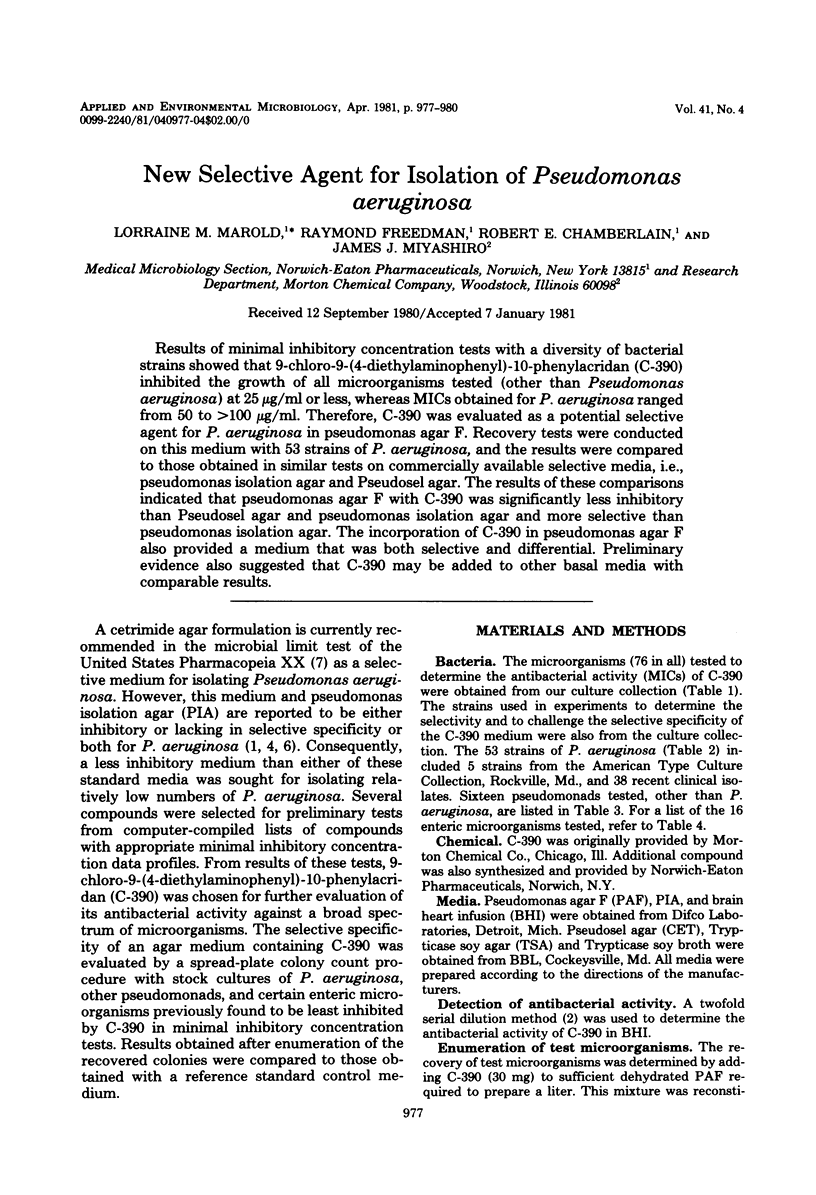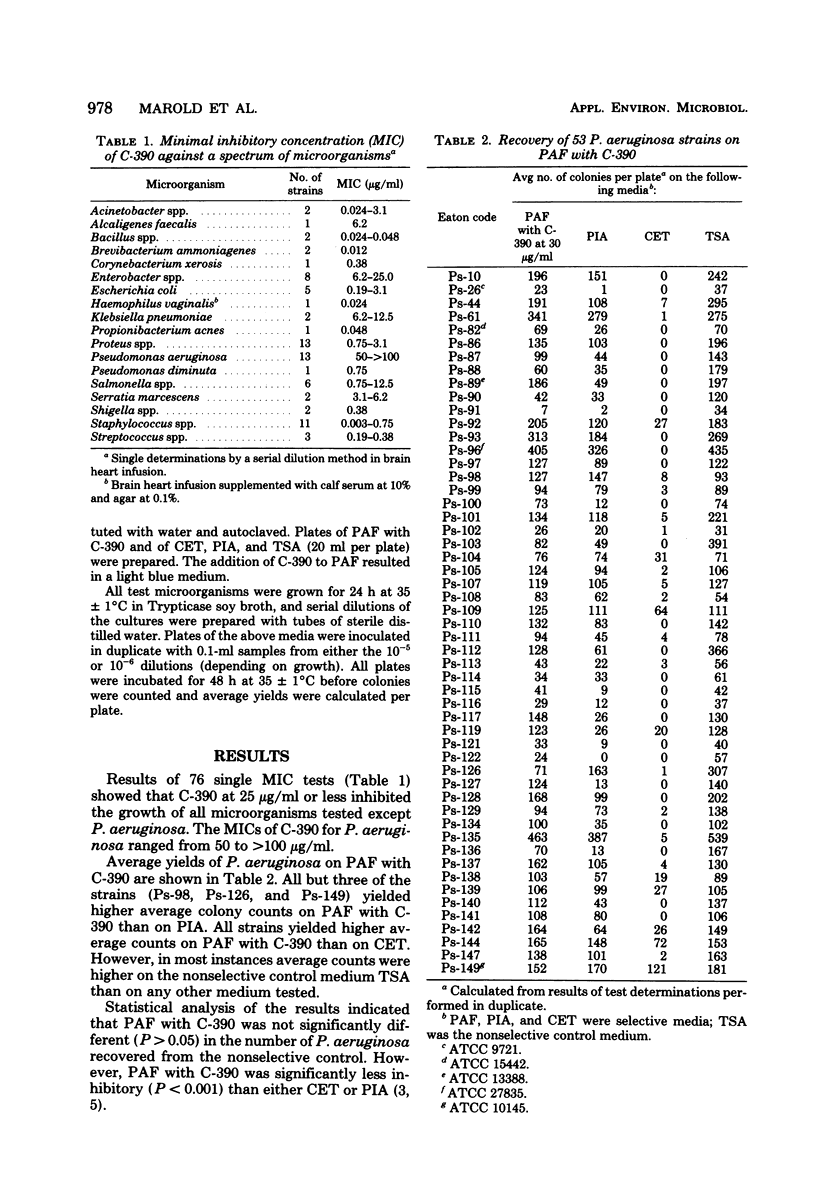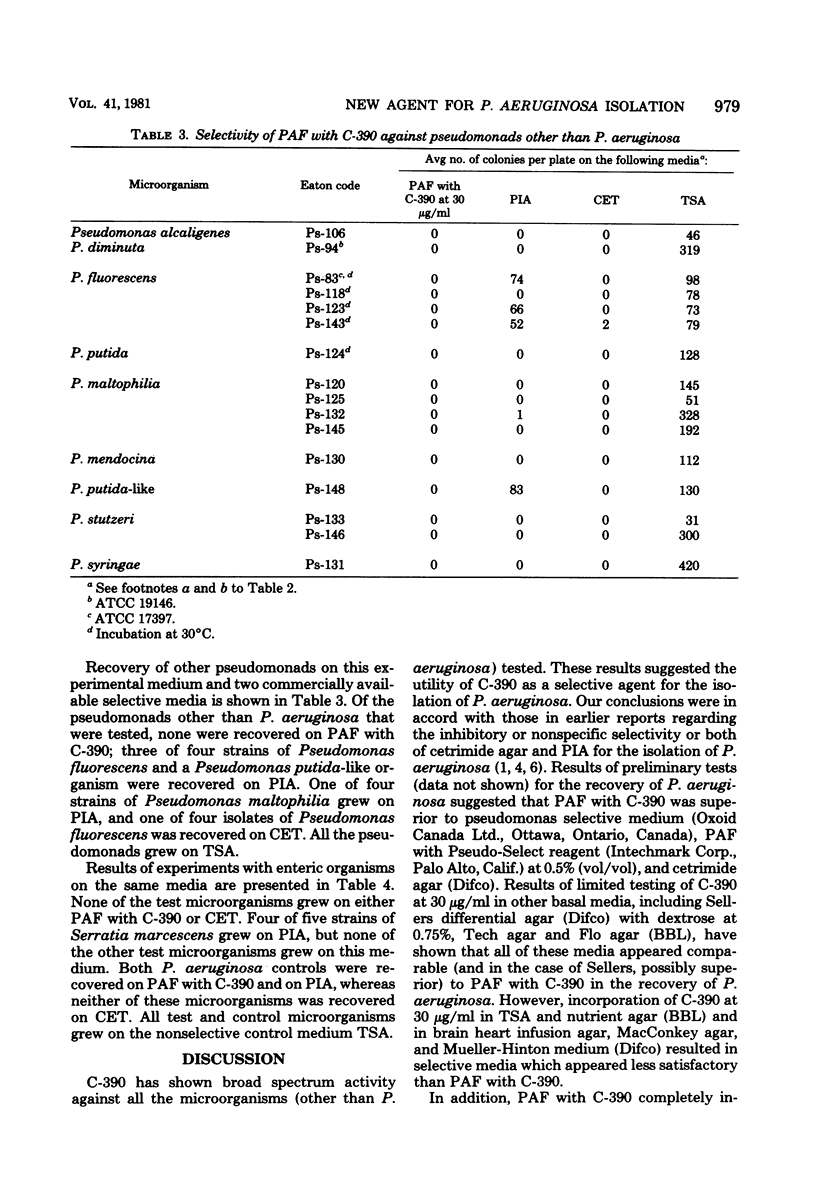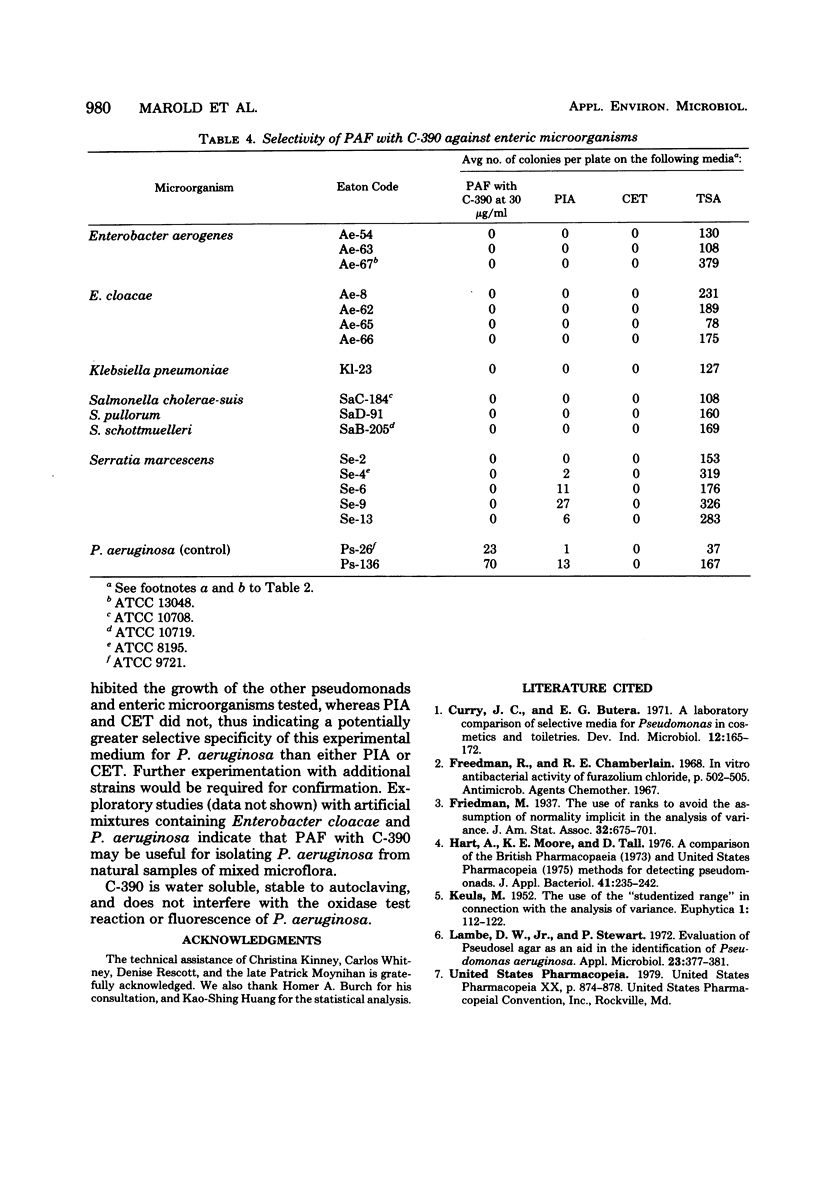Abstract
Results of minimal inhibitory concentration tests with a diversity of bacterial strains showed that 9-chloro-9-(4-diethylaminophenyl)-10-phenylacridan (C-390) inhibited the growth of all microorganisms tested (other than Pseudomonas aeruginosa) at 25 microgram/ml or less, whereas MICs obtained for P. aeruginosa ranged from to to greater than 100 microgram/ml. Therefore, C-390 was evaluated as a potential selective agent for P. aeruginosa in pseudomonas agar F. Recovery tests were conducted on this medium with 53 strains o P. aeruginosa, and the results were compared to those obtained in similar tests on commercially available selective media, i.e., pseudomonas isolation agar and Pseudosel agar. The results of these comparisons indicated that pseudomonas agar F with C-390 was significantly less inhibitory than Pseudosel agar and pseudomonas isolation agar and more selective than pseudomonas isolation agar. The incorporation of C-390 in pseudomonas agar F also provided a medium that was both selective and differential. Preliminary evidence also suggested that C-390 may be added to other basal media with comparable results.
Full text
PDF



Selected References
These references are in PubMed. This may not be the complete list of references from this article.
- Hart A., Moore K. E., Tall D. A comparison of the British Pharmacopoeia (1973) and United States Pharmacopeia (1975) methods for detecting pseudomonads. J Appl Bacteriol. 1976 Oct;41(2):235–242. doi: 10.1111/j.1365-2672.1976.tb00624.x. [DOI] [PubMed] [Google Scholar]
- Lambe D. W., Jr, Stewart P. Evaluation of Pseudosel agar as an aid in the identification of Pseudomonas aeruginosa. Appl Microbiol. 1972 Feb;23(2):377–381. doi: 10.1128/am.23.2.377-381.1972. [DOI] [PMC free article] [PubMed] [Google Scholar]


